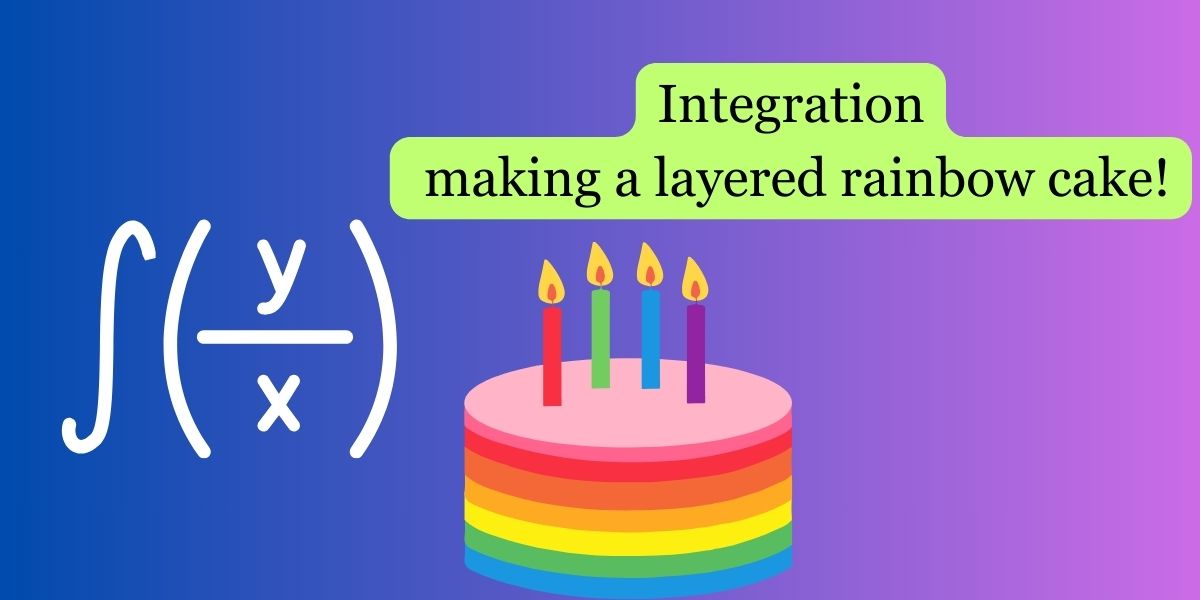Let’s dive into the world of integration using a sweet analogy kids might enjoy – making a layered rainbow cake!
Imagine you’re in the kitchen, and you have different colored layers of cake batter. Each layer represents a different flavor, like strawberry, blueberry, and lemon.
Now, you want to know how much flavor is in the entire cake. Here’s where integration comes in:
- Colorful Layers (Functions):
- Think of each cake layer as a function. The height of each layer represents the flavor intensity at a particular point (like a specific height in the cake).
- Adding up the Flavors (Summation):
- Integration is like adding up all the different flavors throughout the entire cake. You’re not just looking at one layer; you want to know the combined taste of the whole cake.
- Cutting and Summing (Integration Process):
- Now, imagine cutting the cake into really thin slices. You taste each slice, summing up the flavor at each height. The thinner the slices (or the more of them you take), the more accurate your total flavor measurement becomes.
- Total Flavor (Result of Integration):
- By summing up all these tiny slices, you get the total flavor of the cake. This is similar to what integration does in math – adding up all these tiny parts to find the whole.
In mathematical terms, if the flavor (function) is represented by “f(x)” and “x” is the height in the cake, integrating “f(x)” over the entire height gives you the total flavor of the cake.
So, integration is like taking tiny pieces, adding them up, and finding out the full flavor of your delicious rainbow cake! It helps us understand the total effect when we have lots of small contributions from different parts. Just like in baking, where each layer contributes to the overall taste, in math, integration lets us see the big picture by adding up all the little bits.


No responses yet